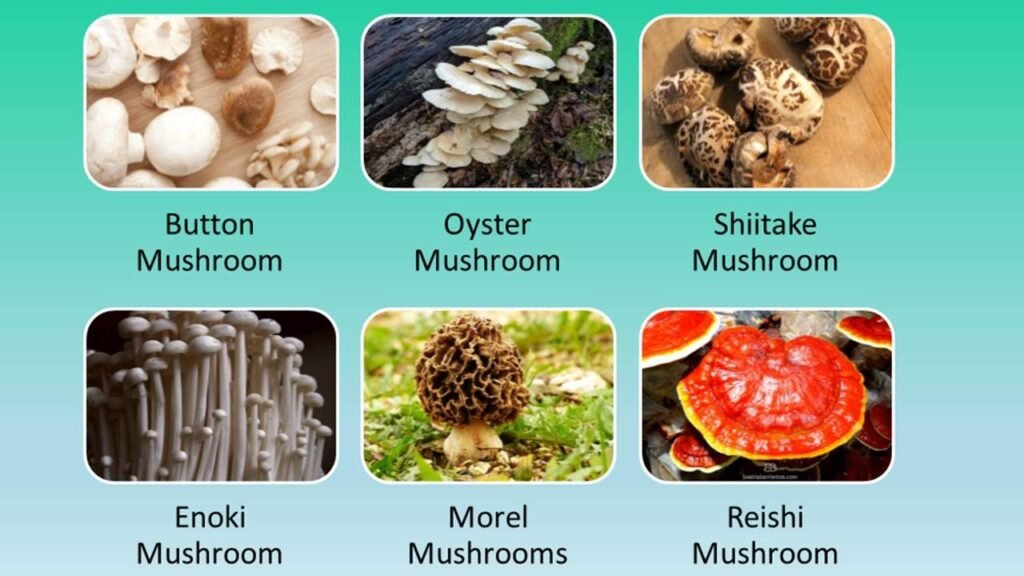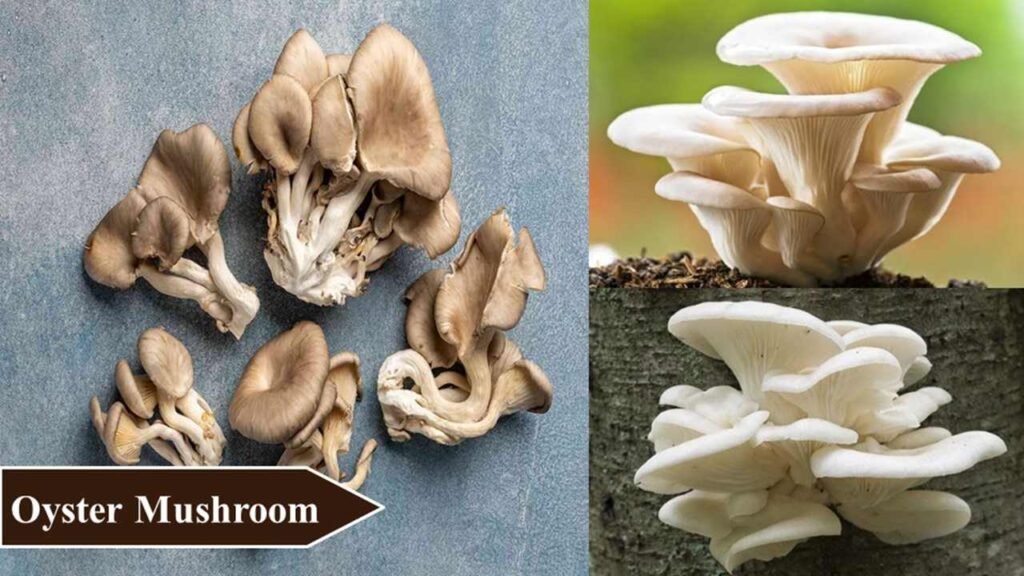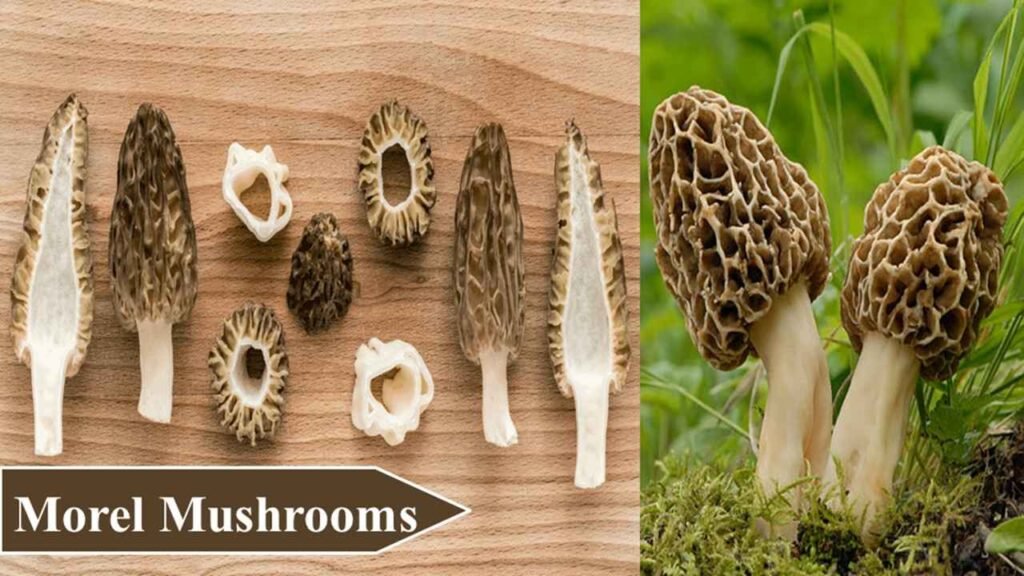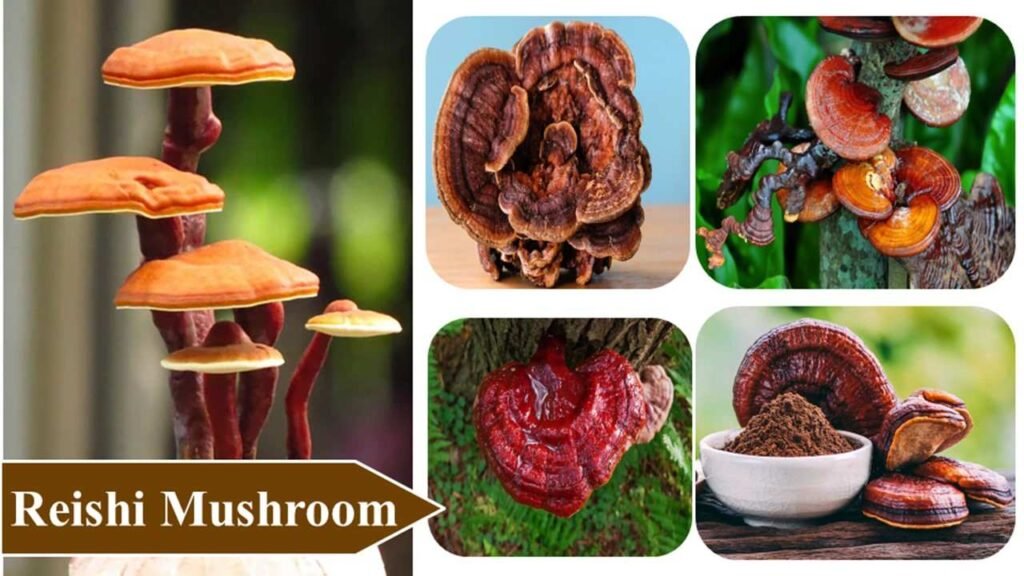It is too often a site to be unnoticed. A white-colored, spongy textured, umbrella-shaped structure emerges from recently cut parts of trees that have begun decaying. These marvelous structures, lauded for their nutritious properties and health benefits, belong to Kingdom Fungi and are commonly called Mushrooms. There are diverse types of mushroom in India. They feed on dead and decaying organic matter and are present around the globe. There are also a large number of different types of mushrooms in India.
However, rather than just being the typical fungi deriving their nutrition from dead hosts, they have much to offer to our dining tables. They are so rich in nutrients that they are used even as nutrient supplements. There are different types of mushrooms in India, each unique in flavor and nutrients that need to be studied in detail.
Mushroom – General Information
Mushrooms generally refer to the umbrella-shaped fruiting bodies that emerge from the surface of dead and decaying organic matter and are part of the fungal body. Therefore, mushrooms themselves aren’t organisms per se, but they are an ephemeral part of an organism used mainly for reproduction. The typical umbrella-shaped structure is that of the Agaricus mushroom or the button mushroom.
In general, mushrooms are fruiting bodies of certain fungi of the order Agaricales.
The classification hierarchy of the mushroom Agaricus bisporus (Button mushroom) is
| Kingdom | Fungi |
| Division | Basidiomycota |
| Class | Agaricomycetes |
| Order | Agaricales |
| Family | Agaricaceae |
| Genus | Agaricus |
| Species | A. bisporus |
Read More:
- Is Mushroom Veg or Non Veg? – Let’s Know the Amazing Fact
- Hydroponic Mushrooms – Amazing Soilless Mushroom Cultivation
How many types of Mushrooms in India?
There are numerous families under the order Agaricales that have similarities to the common mushroom and most of them are important. They constitute the vast types of mushroom in India. There are non-edible as well as edible mushrooms in India. The types of edible mushroom in India are commercially more significant than their non-edible companions. So we can analyze the commercially important types of mushroom in India which are mainly the types of edible mushroom in India.
Types of Mushroom in India
India, a tropical country with adequate humidity, is a heaven for fungi as these humid moist conditions spur their growth. So the country has an abundant mushroom population. But this abundance is not only in quantity but also in the diversity of mushroom species. Therefore there are countless types of mushrooms in India.
This article focuses mainly on some of the important types of edible mushroom in India which entails a commercial significance. The list also includes a brief discussion on the uses and benefits of these mushrooms as well as their cultivation methods.
So the important types of mushroom in India are

Button Mushroom
Scientific name: Agaricus bisporus
Button mushroom is a celebrity in the edible mushroom world. It is widely cultivated in India. It is also regarded as one of the best mushroom in India in health as well as in the economic aspect. These are the most commercially cultivated and commercially used mushrooms. They are small, white, or cream, and have a small cap. They are smooth and have a soft texture and a mild flavor.
These are the mushrooms sold in grocery stores and supermarkets. They have become an attractive ingredient in many cuisines due to their ability to integrate health and taste together. They are even used in Pizzas.
Cultivation Methods:
- Cultivation is done by placing the mushroom spores (which can be bought commercially) in materials like straws, compost, and animal manure. These substances act as the substrate.
- A layer of peat moss mixed with moist soil is added to this substrate.
- Place it in proper condition
| Temperature | 20-25℃ |
| Humidity | 80-85% |
- When the mushrooms reach the desired size, they can be collected by twisting them off the substrate

Uses and Benefits of Button Mushroom
- They are used in a wide range of dishes including pizzas and as salad toppings
- They partake in easing the digestion process and improve the immune system efficiency
- They also contain antioxidants that can prevent chronic heart diseases
The most commonly cultivated and consumed type of mushroom in India:- Button mushroom (Agaricus bisporus)
Oyster Mushroom
Scientific name: Pleurotus spp.
These include mushrooms belonging to the Pleurotus genera, referred to as Oyster Mushrooms due to their structural resemblance to a beautiful oyster shell. They are a significant mushroom variety in India. They are also known to possess an oyster-like flavor. They come in different colors like grey, white, brown, pink, and yellow. They have a fan-shaped structure with a velvety texture and produce a delicate aroma during cooking.
In India, Pleurotus ostreatus, referred to as Dhingri, is a type of edible mushroom cultivated in India and is also regarded as one of the best mushroom in India. Their luscious flavor makes them a favorite constituent in various cuisines and also a favorite among vegetarians. They are also well suited for pan frying and grilling.
Cultivation methods
- Soak wheat straw or paddy in water and sterilize them to remove unwanted microbes. This acts as the substrate. To this, mushroom spawn is added and mixed properly in a container.
- The containers are then kept in dark rooms at room temperature for the mycelium to incubate. The mycelium is allowed to spread through the substrate fully.
- The container is then allowed to be exposed to light to promote the growth of the mushrooms.
| Temperature | 16-20℃ |
| Humidity | 80-90% |
- The mushrooms are allowed to grow. When they reach maturity, the caps open fully, and are harvested.

Uses and Benefits of Oyster Mushroom
- Oyster mushrooms, one of the most important types of mushroom in India are highly popular in Indian cuisine
- They help boost the immune system, lower blood cholesterol levels, and improve the cardiovascular system
- Good source of protein, the perfect dietary ingredient for vegetarian dishes
Shiitake Mushroom
Scientific name: Lentinula edodes
Shiitake mushrooms constitute an important exotic variety among the types of mushroom in India. Unlike the other types of mushroom discussed now, Shiitake mushrooms are an incredibly popular types of mushroom in the whole of Asia. They are abundantly used in Japanese and Chinese cuisines. However, these East Asian natives have prospered to become a surprisingly popular part of the most important types of mushroom in India.
They are usually seen on the dead and decaying wood matter of broad-leaved trees like Oaks and other similar trees. For commercial cultivation, they can be grown on logs or blocks of sawdust. They are reddish-brown and contain a cap (pileus) that contains gills. The stipe or stalk is fibrous. These are known to have a meaty texture combined with a rich, smoky, earthly flavor. Due to their unique taste, they are used in Chinese and Japanese cuisines including sushi and salami.
Shiitake mushrooms were first cultivated in which country?
China
Cultivation Methods
- Oak logs or a mixture of sawdust and hardwood are used as substrates and must be sterilized properly.
- Holes are drilled in the substrate and the spawn is added to it.
- These are kept in a cool and dark environment at a temperature of 15-20℃
- The log-grown Shiitake mushrooms are soaked in cool water for one or two days to mimic natural rainfall. Then they are exposed to fresh air and light which induces fruiting in the fungus.
- The mushrooms attain maturity when the caps are fully developed but are slightly closed. At this stage, they are harvested.

Uses and Benefits of Shiitake Mushroom
- These types of mushroom in India have been revered for their medicinal properties in Asian culture for centuries.
- They are used in Asian and Indian cuisines including Sushi and Salami.
- Contains significant levels of vitamins B, C, and D and also high levels of Iron which are important features of a healthy blood profile for humans.
- Potential anti-cancer properties.
Read More:
Enoki Mushroom
Scientific name: Flammulina filiformis
Another exotic type among the types of mushroom variety in India. A highly popular mushroom in China, Japan, and Korea, they have grown popularly to become one of the important types of mushroom in India. They are also called Golden needle mushrooms or lilly mushrooms due to their unique, aesthetic appearance. They are naturally grown on the tree trunks during the fall and spring seasons. These types of mushroom in India are beginning to be used in Indian cuisines, but are not popularly used as in Asian cuisines.
Unlike other types of mushroom in India, they have a long, thin stalk and are normally white. They have a small round cap at the tip. Their roots or hyphae are strongly connected and the stems grow from a common connected point and elongate to about four to five inches. They have a subtle flavor and crunchy texture making them apt for Japanese and Chinese cuisines.
Enoki mushrooms are popularly called Golden mushrooms
Cultivation Methods
- Sawdust, paddy straw, and other organic materials are used as substrate for the cultivation of these types of mushroom in India. The substrate is sterilized properly.
- The mushroom spawn is then mixed with the substrate and kept in cool temperatures.
- They require cool temperatures with proper air circulation and adequate light for the formation of fruiting bodies.
| Temperature | 16-20℃ |
| Humidity | 80-90% |
- The mushrooms are harvested when the stalks reach nearly four to five inches long.
Uses and Benefits of Enoki Mushrooms
- Popularly used in soups, salads, and stir-fries in Asian cuisines. They are also used as toppings for sushi and can also be pickled.
- Good source of fiber, vitamins (B1, B3, B5, B6, and D), and minerals like potassium, copper, and iron.
- Low in calories and fats
- Immunity booster and has anti-inflammatory properties.

Morel Mushrooms
Scientific name: Morchella spp.
One of the highly prized types of mushroom in India. They are lauded for their unique appearance and exquisite flavor. These are one of the most expensive types of mushroom in India and are mainly grown in the wild in the spring season.
They can be easily identified by their honeycomb structure cap. These types of edible mushroom in India have a nutty and earthy taste. They are highly favored by gourmet chefs and vegetarians and are used in dishes such as creamy sauces, soups, risotto, etc. They are largely wild species and are difficult to cultivate domestically. This is one of the main reasons why these types of mushroom in India are very expensive.
Cultivation Methods
- These mushrooms are involved in complex symbiotic relationships which are an imperative part of their life cycle, hence they are extremely difficult to cultivate.
- Due to their rewarding prices, people have strived to cultivate them commercially using techniques like spore inoculation on sterilized substrates like wood chips or sawdust even in indoor conditions. But none of them have proved fruitful. Still, they are harvested in the wild.
Uses and Benefits of Morel Mushrooms
- They are commonly used in Gourmet dishes, sauces, and soups due to their unique flavor.
- Highly nutritious with a high amount of fiber, vitamins (B2 and B3), and minerals.
- These types of mushroom in India are also found to have important antioxidant and anti-inflammatory properties.

Reishi Mushroom
Scientific name: Ganoderma lucidum
Reishi mushrooms, also known as lingzhi mushrooms are one of the types of mushroom in India with medicinal properties. Their incredible medicinal and nutritious properties have conferred them the title ‘Mushroom of Immortality’. These types of mushroom in India and other Asian regions are admired mainly for their medicinal properties rather than their dietary applications. In the wild, they are seen mainly on the foot of deciduous trees like maple. But contrary to their cultivated form, the wild form of these types of mushroom in India are very rare.
‘Lucidum’ means ‘glossy’ in Latin and is named so because of the mushroom’s shiny, varnished appearance. As a whole, they have a fan-shaped appearance due to the stalk and kidney-shaped cap and are reddish-brown. They have a soft texture and are devoid of gills on the underside.
Cultivation Methods
- The substrates used for cultivation are logs or wood enriched with nutrients and are sterilized properly.
- The substrate is then inoculated with the Reishi spawn and ideal temperature and humidity conditions are maintained.
- The growth requires several months and the mushroom is harvested once they are matured.
Uses and Benefits of Reishi Mushrooms
- These types of mushrooms in India are mainly used for medicinal purposes in the form of tea, extracts, or powdered supplements.
- Rich in antioxidants, beta-glucans, and other important compounds.
- They have stress-relief properties.
- Anti-inflammatory and anti-cancerous properties.
These 6 types of mushrooms discussed above are the most commercially important types of mushroom in India that encompass superb health and culinary properties. They are also the most important types of edible mushroom in India.

Read More:
- How Does Vertical Farming Work | Vertical Farming at Home
- Is Hydroponics Farming Profitable In India? | Hydroponics farming setup cost
Conclusion
By listing a wide variety of the types of mushroom in India we have become able to answer the initial question; How many types of mushroom in India? By trying to answer this important and beautiful query we have been able to discover the colorful world of mushrooms and their health and culinary benefits.
One property common to all the edible types of mushroom in India is that they all have attractive health benefits. Mushrooms are rare objects that have been able to combine taste and health making them the perfect ingredient for your food menus whether vegetarian or not. Whether added to curries, stir-fries, or soups they add flavor and multiple years to one’s lifespan. So in conclusion, it is always wise to add one or more of the above-mentioned types of mushroom in India to your cuisines.
Latest Post
- Punjab & Sind Bank Introduces Special Program to Support Food and Agro-Processing Sector
- Beyond Classrooms and Gardens: How a Professor Turned His Passion into Purpose
- October Issue 2025- Times of Agriculture Magazine
- Top 10 Pesticide Companies in the World
- September Issue 2025- Times of Agriculture Magazine
- Top 15 Fertilizer Companies in the World
- Top 10 Vegetable Farming Profit Per Acre in India
- August 2025 : Times of Agriculture Magazine (AgriVoltaics Farming)
- Button Mushroom Farming: Infrastructure, Cultivation, and Profitability











